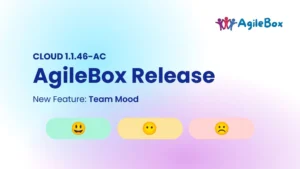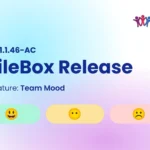Contents
Introduction
Robust task management is far more than a necessity; it can confer a real competitive advantage. If managed well, companies that maintain strategic alignment, maximize resource allocation, and communicate effectively can avert most of the pitfalls that ensnare so many businesses and remain immune to the usual adversities of the current market. In today’s blog, let’s find out how successful organizations benefit from using the planning poker-task estimation technique.
In 2024, what do businesses struggle with?
Businesses face big challenges, and one of the toughest is getting tasks done right. It’s not just about handing out jobs and doing them. It’s about making sure those tasks help the business succeed.
One big problem is when plans and guesses about tasks aren’t clear. People might end up doing the same job, or some jobs might get ignored. This wastes time and money. It also means people might focus on the wrong things instead of what really helps the business grow.
But when businesses manage tasks well, it’s a game-changer. It’s not just about getting stuff done. It’s about doing it in a way that helps the business beat the competition.
How can your business leverage Planning Poker – Estimation Technique?
Planning Poker offers a dynamic and democratic way to handle task estimation that enhances both accuracy and team collaboration. Originating from the Agile methodology, this technique uses a deck of cards to facilitate estimation, making the process not only efficient but also engaging.
The Process
In our app AgileBox, teams can select the Jira issue to estimate. Then, team members choose poker cards that represent the points estimation based on the difficulty of the task. The game monitor will determine the task’s final estimation points and assign its importance at the end.

Users can select a custom deck template that suits their team’s preference for their game. AgileBox offers options such as Fibonacci, T-shirt, or users can customize the game to fit their team’s specific needs.

Choose a template for your game
In planning poker, the choice of the Fibonacci sequence reflects the increasing complexity of tasks. As numbers in the sequence grow, they denote tasks that are not just incrementally, but substantially more challenging. This nonlinear scale enables teams to assess and compare the effort different tasks require easily, making it a preferred choice for agile estimation.
Moreover, T-shirt sizing in planning poker is a project estimation method that uses familiar T-shirt sizes—XS to XXL—to represent the relative effort and complexity of tasks. This method simplifies estimations by enabling teams to gauge project needs swiftly and without detailed calculations, making it ideal for agile settings where quick, relative sizing helps streamline planning. It is widely used due to its simplicity and the ease with which teams can adapt to it, facilitating more effective and collaborative project management.
T-shirt sizing is a straightforward yet potent project estimation tool, though it has its challenges. For example, its subjective nature can be countered by defining standard sizes for common projects to ensure team alignment. Providing clear context for each size category when introducing the method helps minimize subjectivity. Additionally, if distinguishing between sizes proves difficult for your team, consider simplifying the options to Small (S), Medium (M), and Large (L), with the possibility of adjusting as needed later on. This approach can clarify and streamline the sizing process.
Whether through the structured progression of Fibonacci, the intuitive simplicity of T-shirt sizing, or customized options, AgileBox empowers teams to make precise and consensus-driven estimations. By streamlining the estimation process, AgileBox not only optimized resource allocation but also fosters a collaborative and efficient planning environment, crucial for navigating the complexities of modern project management.
→ Discover: What Are Story Points and How Do You Use Them?
Why it Works
Planning Poker capitalizes on the collective intelligence of the team. Discrepancies in estimates lead to discussions, enabling team members to share insights and rethink assumptions. This method not only clarifies the task but also builds a common understanding within the team.
Planning poker can be used beyond software development to estimate any effort, like home renovations or office relocations. It helps assess task complexity but isn’t foolproof. Team collaboration may be incorrect if important information is missing, and perception of task difficulty can shift over time. Additionally, stakeholders often disregard the points system used in planning poker, focusing instead on project deadlines. The method’s inherent vagueness can frustrate those accustomed to thinking in time units.

Key Benefits of Planning Poker
- Collaborative Estimations: As noted in the article, Planning Poker involves the whole team, which prevents the domination of the process by any single member and integrates diverse perspectives for more balanced estimations.
- Team Agreement: Through discussion and debate, teams reach a consensus, which enhances commitment to the estimations and project plans.
- Focus on Value and Complexity: The technique encourages teams to consider the value and complexity of tasks, rather than just the time it will take, leading to more robust project planning.
- Real-World Application: For example, in a software development company, Planning Poker helps team members understand the scope and complexity of new features more clearly, aligning estimations with actual development times and reducing the variability in project delivery timelines.
By integrating Planning Poker into their project management toolkit, businesses can significantly improve how projects are estimated, which leads to more predictable and successful outcomes. This technique is particularly beneficial in fast-paced environments where teams must rapidly adapt to changing requirements while maintaining accuracy in project scopes and timelines.
Conclusion
As we have explored, this agile estimation technique not only refines task estimation but also enhances overall project management by fostering collaboration, team agreement, and a deeper understanding of task complexities.
For businesses looking to drive efficiency and success in their projects, integrating Planning Poker into their workflow represents a strategic advantage that can lead to more predictable results and a more aligned team. As companies continue to navigate the complexities of modern markets, embracing such robust methodologies will be key to adapting and thriving in an ever-changing landscape.
Ready to discover planning poker? Get your plan with AgileBox today – Planning Poker, Agile Retrospectives & Daily Standup for Jira.
→ Try out AgileBox – Planning Poker, Agile Retrospectives, Daily Standup for Jira














